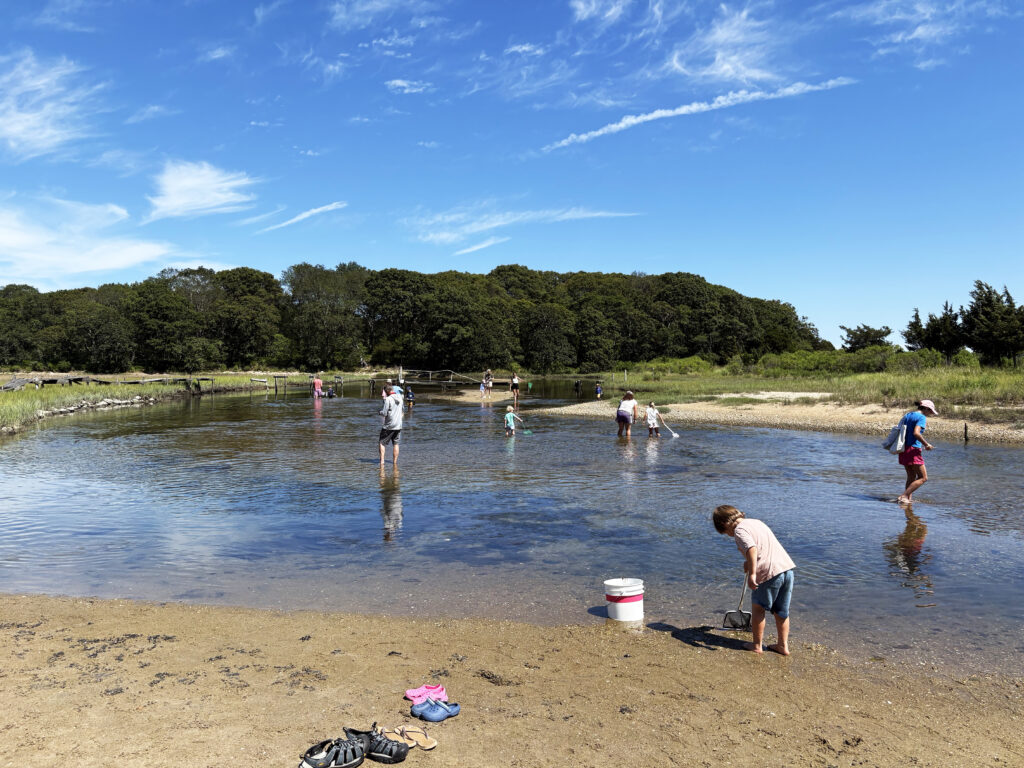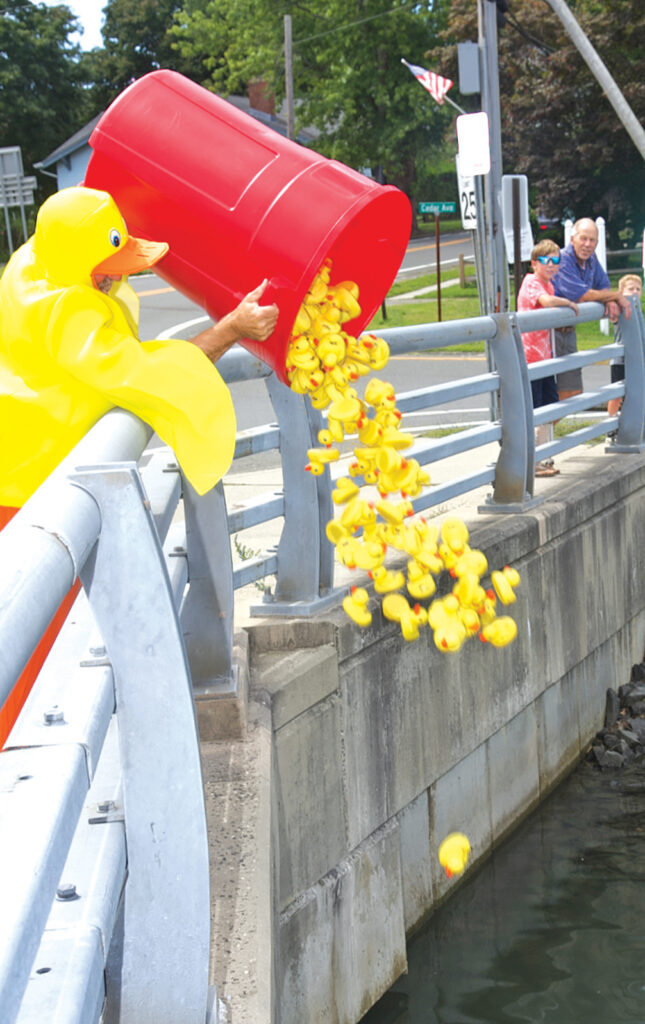Catching fun in a Shelter Island salt marsh

On Tuesday, July 22, Mashomack Preserve hosted children ages 4-7 for the “Summer Seedlings in the Marsh.” The event was held in a salt marsh at Bass Creek, a few miles into the preserve. Parents and grandparents accompanied the youngsters to explore the marsh for marine and coastal life.
The visitors were led in their exploration by Rebecca Kusa and Celina Callo-Simonnet, two employees of the Nature Conservancy. Immediately, boys and girls got in the water and dirtied their hands, grabbing all of the hermit crabs and shells that they could carry. Each adult and child was instructed to fill buckets on the shore with their best finds so the educators could speak to the group about each of the animals once everyone was done collecting.
Every child was also given their own handheld net to help catch as many fish as possible. However, unsurprisingly, most of the children were more keen on using the seine net, a two-person contraption used to catch more than one marine animal at a time, which the teachers showed off before passing it around for others to try.
After filling their buckets and sharing their finds with one another, parents and students gathered around a clear tank on the shore to learn about the findings.
Ms. Kusa and Ms. Call-Simonnet began by pointing out the animals that had been circling the group from outside of the water, primarily the egrets overhead. Despite finding shrimp, puffer fish, clams, and sea sponges, the most popular discovery by far was a giant, flat-clawed hermit crab.
The guides also spoke about the incredible significance of the salt marsh to each of these creatures. Ms. Kusa mentioned how the salt marsh often serves as a home to small and developing animals, protecting them from predators in the ocean.
She also pointed out how the water temperature in the marsh can fluctuate by 40 degrees, making it a potential home for species of all kinds. The diversity in marine life also allows for interactions between species ordinarily distanced from one another, making events like this all the more fascinating.
Ms. Kusa later highlighted the importance of each child’s excitement to learn about what they had fearlessly pulled from the water. She noted that she had been exposed to the outdoors as a child and, from programs like this, she began to value nature. By teaching young people to enjoy the outdoors, she said, the Nature Conservancy hopes to inspire a sense of caring for what brings them joy.
Underscoring the point, she quoted celebrated naturalist and biologist David Attenborough, saying, “No one will protect what they don’t care about.”









